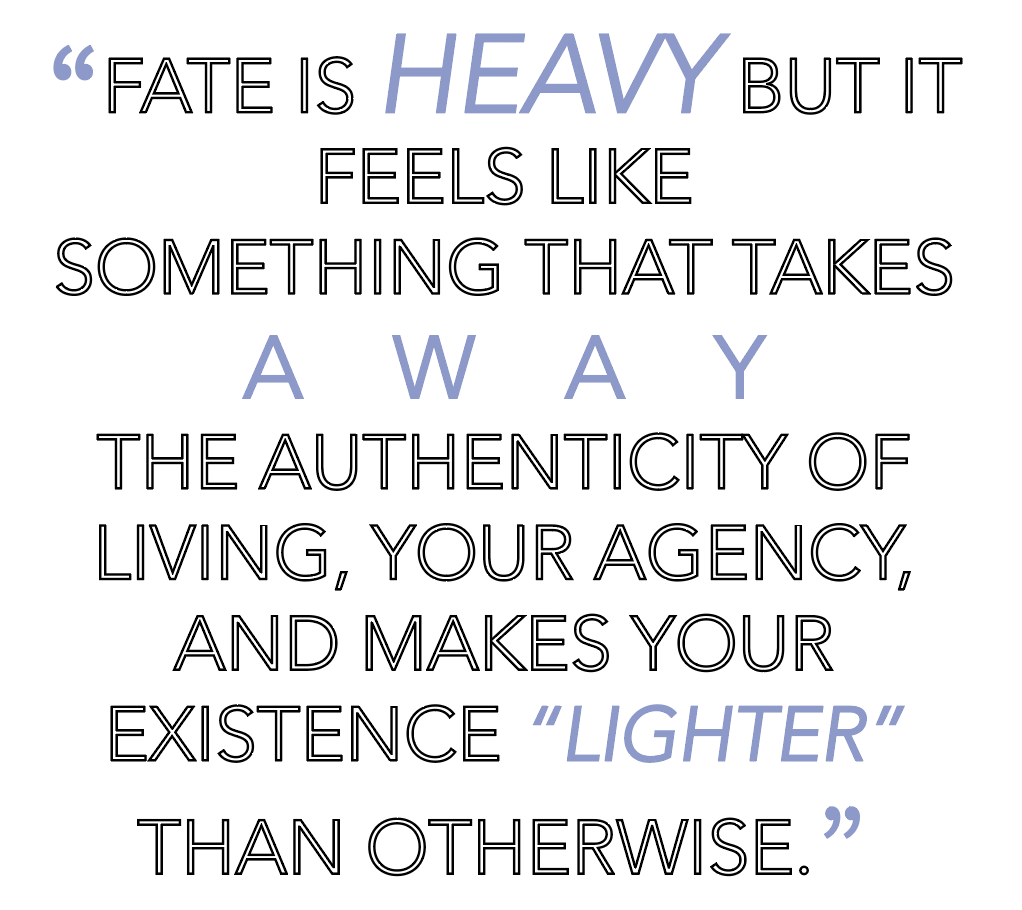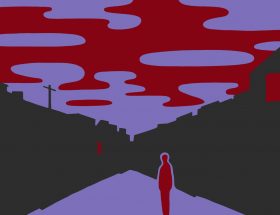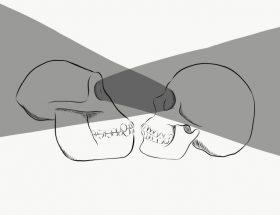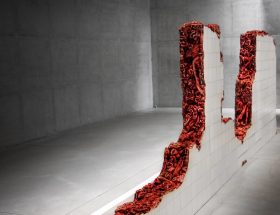Those of you who have read Milan Kundera’s Unbearable Lightness of Being know how beautiful and poetic circumstance can be. If you have watched Alejandro Iñárritu’s masterpiece Amores Perros then you understand the chaos, the rough, loud rock and roll of coincidence. If you have had the pleasure of watching Kieślowski’s Three Colors trilogy maybe you understand chance as something powerful and all-consuming. As different as they are, all three of these works share a similar approach to the base nature of what serendipity truly is: magic.
What do I mean by magic? I refer to an unexplainable, earth-shifting force of such a magnitude that it leads both to the most spectacular and the most mundane occurrences all around us. Serendipity underlines our entire existence, it shapes worlds and moves mountains, it creates a tantalizing “what if” that the vast majority of us spend all of our lives searching for. Awareness of its existence allows us a moment of deep reflection that leaves us so deeply perplexed that it causes a pain one can hardly fathom.
Does time present exist separately from time past? Do they both exist in time future? Is time solely an abstraction of perpetual possibilities? Does it even matter?
My kitschy understanding of Burnt Norton sears my brain when these “what if” scenarios flood its surface, but above all else keep me wondering about my present. I guess the biggest “what if” is whether the cataclysmic encounters serendipity creates are the result of a butterfly flapping its wings in the Amazon or whether there is a predetermined force that cannot possibly budge. Is it ‘Ess muss sein?’ Or is it ‘Es konnte auch anders sein?’

My firm belief in the fortuitous creation of events throughout time takes the weight of fate off my chest as much as it makes my stomach drop. Fate is heavy but it feels like something that takes away the authenticity of living, your agency, and makes your existence “lighter” than otherwise. Serendipity, on the other hand, gives everything layers the most miniscule of choices and drives stars to collide with one another and is ultimately more potent than fate. It multiplies our existence into a myriad of potentials and makes the fortuitous occasion that much more meaningful, if you will.
It is another question altogether, though, whether serendipity is a matter of personal agency. Amores Perros observes the interconnected lines between three different love stories and helplessness of people before chance encounters-with dreams, hopes, cars, and limbs obliterated in the process. The film explores the cruelty of serendipity in the fact that it controls us to an extent, locks us in, and connects us to others in deeply violent manners. Our interconnectedness is far more powerful than the possibility of the existence of fate, and that is perhaps what causes a strange sense of pain when we contemplate the directions our lives could have taken otherwise. Under these terms, Sartre was correct when he said that Hell is other people.
Iñárritu’s film has multiple examples of this, but the one that stood out the most to me was not the most “central” event (a car crash), but rather the collateral damage of one of the brutal events that led to it. The character of Octavio owns a dog,Cofi, that he drags into the brutal underground scene of dogfighting in order to fund an escape he has planned from Mexico City with his brother’s wife. The violence onscreen is brutal, demonstrating Octavio’s descent into brutality and id as he recklessly searches for his own freedom to no avail. After trying to rush his injured dog to the hospital, the car crash leaves Cofi injured and on the side of the road. Contract killer “El Chivo” rescues him and takes him back to where he lives with a group of rescue dogs. He comes back one day to discover that when he left them unattended, Cofi had torn apart all the other rescues, creating a heartbreaking scene of carnage before the viewer. Cofi was a trained killer, the result of the decisions made by his former owner- Chivo and his group of rescue dogs had been left to deal with the scraps. Octavio’s decisions set off a series of events that confine all those involved in a web of darkness, and the stars align to show the wretched entrapment of fortune.
These coincidences, powerful and moving, are underwritten, not by the stars, but rather by the degrees of separation that increasingly appear to be more of an illusion when we consider the way we are tied together. Chance is unexplainable, and that which is unexplainable feels otherworldly as mundane as it might otherwise be. We might not view it as something as inherently profound as fate, but the fact of the matter is that either way things are out of our hands whether you believe in one or the other.
The first film of Kieślowski’s Trilogy (Blue) similarly observes this theme, with its protagonist, Julie seeking freedom from others to no avail. Following a car crash, she seeks to be reborn as she breaks from her husband and child’s deaths and struggles as she is unable to do so. She finds herself selling all of the possessions her family once held and moves into an apartment, completely isolated from any potential material reminders of her past. She finds, however, her past chases her through a series of coincidences that line up across time. A boy who witnessed the car crash finds her and tries to give her a necklace he found left at the scene. Her husband’s former mistress also seeks Julie out to tell her that she is pregnant with his child. The film ends with Julie realizing the futility of her efforts to break free- she instead gives in to the inevitability of her past echoing into her future and builds a new life from there.
Maybe there is where we can truly find the beauty of serendipity- by consciously giving into it. El Chivo in Amores uses the brutal murder of his beloved rescues to reflect on the fact that he, like Cofi, is trained to be a killer, and the only potential results that stem from these are disastrous. Julie in Blue gives in to the accident that happened by chance in her life, paving her way towards a proper healing process. The fact that these cataclysmic events are inevitably not just up to us is terrifying yes, but an interconnected world is increasingly more so a fact of life as technology places us closer together over the years. Capitulating to fortuity shows us that though we live in a hell constructed by other people, what we make of chance encounters can make us heal like nothing else. One could even call it magic.
Photography by Isabella Baxter




